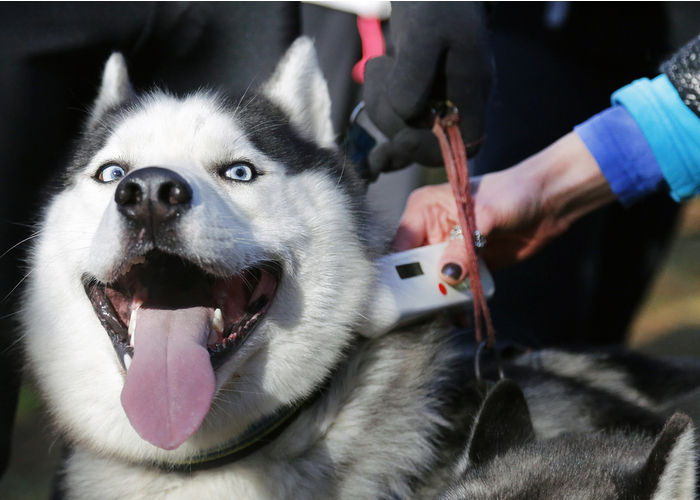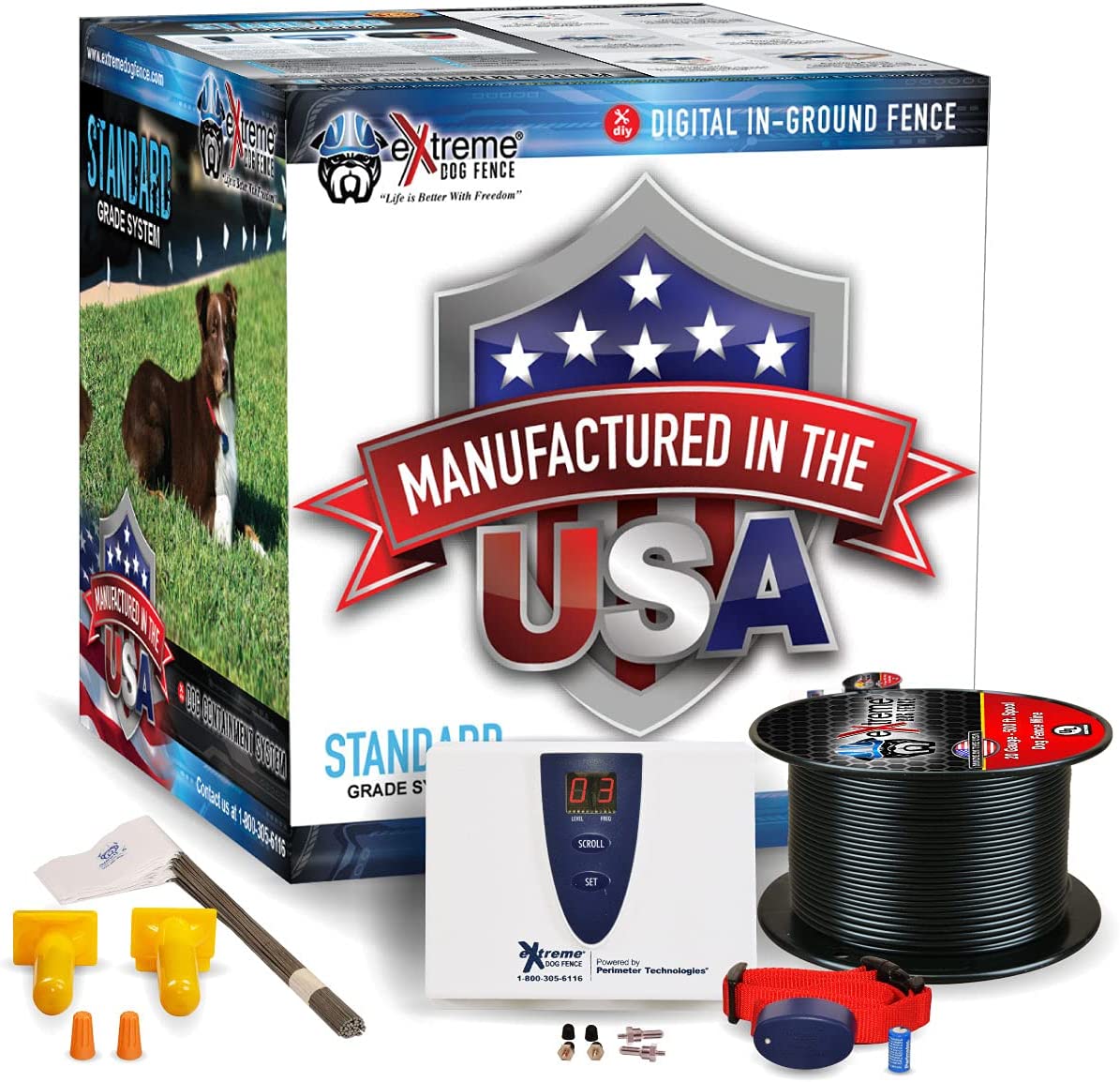Table of Contents
Is your pup a bit of a troublemaker? Does he like to hide?
Does he tend to run away at some point and GPS trackers are not your type?
Well, don't worry, because there are alternatives to GPS trackers for dogs.
Sometimes our mischievous little dogs tend to be good at playing hide and seek.
Below, we'll discuss three of the best alternatives for GPS trackers and we'll also give you example products so you can go and look for them yourselves.
Without further a do, let's get right into it!

Alternatives To GPS Trackers For Dogs
GPS Chip for Dogs
First on our list of alternatives to GPS trackers for dogs is the Microchip for dogs.
How does a dog microchip works? Is it different from a GPS tracker? We'll tackle both of these below.
So how does it work you ask? Well, a pet microchip is about the size of a grain of rice and it is a tiny radio frequency identifying device.
The microchip is stored in a special type of glass and it is compatible with living tissue.
It is implanted between the pet's shoulder blades underneath the skin with a large needle and a specific syringe. This whole process is similar to getting a shot.
If you're worried that your pet will get hurt, well, the implantation has little to no pain. Many pets don't even notice it.
After placing the microchip, the next thing you need to do is to have your pet registered with a microchipping company.
Usually, this is just a one-time fee. This is how your dog can be tracked if ever they get lost.
As soon as the microchip has been placed, it can already be detected with a handheld device that uses radio waves to read the chip.
The device will now scan the chip and gives them a unique alphanumeric code.
Each pet has its unique code where it is linked to the owner's contact information on a pet recovery database. This way, they can easily identify them and directly contact you.
Difference between a Microchip and a GPS tracker
The differences between a dog microchip and a GPS tracker are their size, hardware, and function. First, let's discuss their hardware.
Hardware
To determine the difference between their size is to know what's inside the device. A GPS tracker and a microchip have different hardware inside them.
For instance, the hardware of a microchip is just a small electronic chip enclosed in a glass cylinder whose main function is providing an ID number that is linked to your pup.
On the other hand, there are a lot of essential components in a GPS tracker for them to work. These are GSM Modules, GPS Antenna, LED light, loudspeaker, battery pack, and a sim card.
Size
As I stated above, the size of a microchip can be compared to a grain of rice. And that's because it only needs a small electronic chip for it to work its function.
Meanwhile, GPS trackers should be big enough to include all the necessary hardware that is mentioned above.
Generally, the average GPS tracker's dimensions are 72 x 29 x 16 mm and it weighs 30 grams.
Function
Even though they can both help you find your lost dog, the main difference between a microchip and a GPS tracker is their function.
So let's say your dog gets lost, luckily for you, you got them microchipped when you got them. Now if some good samaritan has found your pup, they'll most likely take them to a vet to get their chip scanned for identification.
On the other hand, a GPS tracker gives you your dog's real-time location. So, you don't have to worry about waiting for someone to find your pup. You can go pick them up yourselves.
However, GPS trackers can be a bit costly. But it's a great investment.

Bluetooth Tracker
The second alternative to GPS trackers for dogs is Bluetooth trackers, also known as item finders.
These are small devices that use Bluetooth to connect to your smartphones. This device allows you to track your dog when they're within Bluetooth range.
Bluetooth trackers are also great for people who forget where they placed their personal belongings like keys and wallets.
However, take into account that this device only works when the object or your pet is close to your phone.
Bluetooth trackers have a 200 to 300 ft range maximum. It all depends on the strength of the Bluetooth signal between the device and your phone.
Pros of using a Bluetooth Tracker
- Battery life can go from months to even years
- Generally can be attached to any surface or collar
- Can show you the exact location of your pup
- Cheaper than a GPS tracker
- Small and Lightweight
Cons of using a Bluetooth Tracker
- Limited range (10 to 60 meters depending on the device)
- Specifically made to track items, not pets
- Bluetooth requirement
- Limited features
- Can be swallowed by your pup
Difference between a GPS Tracker and a Bluetooth Tracker
Cost
Bluetooth trackers are much cheaper than GPS trackers. Bluetooth trackers can cost between $10 to $50 only.
On the other hand, GPS trackers can cost more than $50 and most of them require a monthly subscription fee. The cost of the subscription fee will depend on the coverage plan you'll need.
Connection Range
As we've discussed above, one of the downsides of a Bluetooth tracker is that it has a very limited range.
Since these devices are made for finding objects and not pets, you can only track your pup from a short distance.
Meanwhile, a GPS tracker can provide you with the real-time location of your pup wherever and whenever you want. As long as the GPS Tracker's sim has a signal, you'll find your dog.
Battery Consumption
When it comes to battery life, a Bluetooth tracker has a great advantage.
A Bluetooth tracker can last from 6 months to 2 years! These devices are commonly replaceable with coin batteries.
Other Bluetooth trackers have rechargeable batteries, but it does require charging more often.
On the other hand, due to their different kinds of features, GPS trackers consume more power than Bluetooth trackers. Usually, GPS trackers need charging between 3 to 7 days.
Geofencing
First, let's discuss what even is Geofencing. Geofencing is a virtual border around a certain area with your GPS tracking system.
For instance, let's say you'll set up a fence around your house, if you're pup suddenly leaves that area, you'll be alerted by your GPS tracking device.
Now, the difference between a GPS tracker and a Bluetooth tracker is that with a GPS tracker, you can create multiple fences in multiple areas.
While a Bluetooth tracker is just limited to where the Bluetooth connection is in range.
Size
Furthermore, when it comes to size, GPS trackers are a little bit larger than Bluetooth trackers. That's because it needs more space to accommodate all the hardware needed.
The smallest GPS tracker can be the size of a car key, but it tends to be heavier than usual. Notice that when the GPS tracker is bigger, it has more capabilities or more features to offer.
Bluetooth trackers are all pocket-sized. This is because most people use this device to find their lost keys and wallets.
Example of a Bluetooth Tracker for Dogs
Tile Mate Bluetooth Tracker
This Bluetooth tracker is not specifically designed as a GPS tracker for dogs. But it can also be used in dog collars.
All you need to do is install the Tile app on your smartphone.
You can also buy the Tile Mate Combo Pack which consists of four slim trackers. It has a designated tracker for your dog and other objects that you keep on forgetting.
With this device, you can ring your lost key or dog within 250 feet.
Invisible Fence
So how do invisible fences work you ask?
Well, these electric fences have buried wire two to six inches underground. This wire is connected to a transmitter in the house that sends you a radio signal.
Your dog needs to wear a specific collar that is made to detect the radio signal.
For instance, if your dog gets too close to the wire underground, it'll send an alert or a shock to your dog's collar telling them to turn from the fence.
Having an invisible fence at home is not an easy task. You'll need to train your dog to play in safe areas and they should also know where are the places the alert will be triggered.
Training is essential because they do not understand why they are experiencing sudden shock when they come close to a certain area.
Invisible Fence Pros
- Having an invisible fence is that it is a less expensive version of traditional fences
- Invisible fences work on almost any terrain
- Do not take up any space because it is, well, invisible
- Can be installed quickly
- It reduces the chances of your dog running away
Invisible Fence Cons
- It requires Training
- Your dog might be frustrated or jealous if they see other dogs roaming freely
- When a dog triggers the fence and ignores the “beep” signal, an electric stimulus is discharged to the collar, giving them shock or discomfort
Example of an Invisible Fence
Extreme Dog Fence – Second Generation
This dog fence is currently the most popular product in the dog fence market. Its high quality, perks, features, and additions make its price much higher than normal fences.
This fence extends from 500 to 5000 feet of the highest rate 14 gauge wiring.
The provided collar also contains five correction levels so that you can adjust and lower the power if necessary.
Inside, you'll also find a kit that contains waterproof splices and other installation tools needed for you to fence up!
Frequently Asked Questions
How much is Fi collar a month?
Fi Collar's subscription costs $8.25 per month. But you can also subscribe by year which costs $99 per year.
This subscription adds your dog's collar to the LTE-M low-power cellular network. This offers 20% to 30% more cellular coverage in the US than other 3G networks.
Are GPS collars safe for dogs?
Yes, GPS collars are generally safe for dogs. If you're scared that your pup can be exposed to some radiation, you don't have to worry.
These trackers are completely safe because they are on the lower end of the electromagnetic spectrum.
Can I scan my dog's microchip with my phone?
No, you can not scan your dog's microchip through your phone. There are no apps for iPhone or Android that can do this or at least, not yet.
Microchip scanners are stand-alone devices that are separate units that can't be part of a phone.
![]()
Alternatives To GPS Trackers For Dogs Final Thoughts
If you think that GPS trackers are a bit expensive, you're at the right place. Above, we've discussed alternatives to GPS trackers for dogs.
These are Microchip for dogs, Bluetooth Tracker, and Invisible Fence for dogs. These alternatives are great for your pooch who has tendencies to run away.
The devices listed above are great investments for dog troublemakers.
But it can also be great for finding things. For instance, Bluetooth trackers are specifically built for finding lost objects like keys and wallets.
However, there are also a lot of differences between these alternatives and a GPS tracker. After all, GPS trackers have a lot of features that these other options do not have.
That's why as the pet owner, it is your job to research these things. Don't forget that the most important thing is your pet's safety.
Losing a pet is much harder than you think. My advice is that you invest in these safety precautions.
Our dogs deserve to live a long, happy, and secure life.














